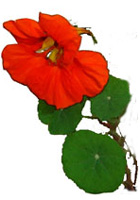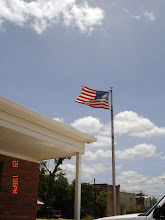 My Hand
My Hand Realistic
8.5" x 11"
pencil
If you study the work of artists through the ages, you will find that they often did self portraits, or used themselves as models when they needed to see how some part of a person looked.
Even in elementary school art, students can begin doing self portraits by looking in a mirror at home or in class. They can try to remember what they look like, or look across the table and draw each other. They can check in a mirror to make corrections in their self portraits.
You should remember what you look like because you probably spend more time looking at yourself than anyone else. But, do you look and not really see? Or remember? From brushing your teeth, to washing your face, fixing your hair or makeup, checking your clothes in a mirror, you have probably spent hours looking at yourself in a mirror during your life.
Sometimes, when people draw another person, it may look like the artist. Possibly they draw what they know, or what is within them, instead of what they actually see. We translate the strengths, the lines and shapes that we are familiar with, or feel, into our drawings, without realizing it. And, again, it is easy to put down the image that we are so familiar with , the one that we have seen in our mirrors for many years.
One thing that can be done is to draw a picture of your own hand, or your own foot. You have probably looked at those almost as much as you have at your face! Before we did portraits, I had students start with studies of their hands and their feet.
I hope that you will try this yourself! The more we practice seeing, and drawing, the more observant we become, which helps all sorts of things in our lives. So, try this challenge, and, if you come out with something interesting, scan it, or take a photo, and send it along to me. I'll make a slideshow out of them and add them to the blog. Might be a fun thing to do! I need to do a new drawing, too.
This is what you do:
1. Put a piece of paper on your work space. You can tape it down, if that will help to keep it straight.
2. Shake your "opposite hand" (the one that you don't write with!), and drop it loosely, in a relaxed position on the table in front of you, and near, but not on, the paper. You will need to keep your hand in that position until you are finished, so be sure that you are comfortable.
3. Don't trace!
4. Study your hand, then find a place to start drawing. It could be on the tip of the fingers or the thumb, at your wrist, or wherever you want to focus first.
5. Draw the outside edges first until you have drawn the outline.
6. Add details such as creases, wrinkles, and fingermails.
7. Look for the darkest areas and add shadows. Try to blend in the direction that things go such as up and over, down and around, to show form.
8. Use a tortillion or stump, or a piece of tissue to rub or smooth your shading. Some people blend with their fingers, but most people agree that this could add an oily spot from the natural oils in your skin.
In shading, some people like to use hatching or cross hatching, (diagnoal and crossed marks). To me, that is okay for a hurried sketch, but, in order to show the texture of skin, my preference is for smooth blending. I like the hatching effect for rough textures, like window screens, but not for things that are actually smooth. Unless it is used like shorthand, an indication of more work to be done later.
9. Go back and darken any areas that need to be darker.
10. To add highlights, use an eraser to remove any pencil work on that spot.
One thing to remember is to look, not only for the light source, and where the light falls or doesn't fall, but also that light appears to come forward and dark seems to recede, or go back. So, if you want something to look like it is coming forward, or closer to you, you can lighten that area. Or, if you want it to appear to go back, away from you, you can darken that area and it will appear a bit more distant.
This challenge is to do a more realistic style hand, but I have other ways to do more studies of the hand.
Not only will this work on observation of something that is very close to you-your own hand, and make you a bit more observant, but you will have a nice drawing of what your hand looks like, at this stage of your life. And a nice piece of art, as well. It's really good to do these things, and self portraits, at different stages of life. Hands are interesting, as well as faces.
You may have had older relatives who, when you were a child, would place their hands beside your's and say, "I remember when my hands were smooth like that." It would be very hard to understand that as you looked at your own smooth hand and their wrinkled, gnarled hands.
One thing I remember about my mother is her little finger as she played the organ, and then the rest of her hand. As she died, I held that little finger. It was the only warm thing left on her body.
We think of taking pictures, or having portraits of the face and the whole figure, but we don't often think of the hands of the people in our lives. We remember them working, their touch, their gestures, how they used their hands when they played, laughed, sneezed, talked, and all the things that people do in life. But we don't often think of recording those things that are so familiar in life.
At a workshop for art teachers, we were doing drawings of our hands, and I was so thrilled when they picked my drawing to go on a publication for the Regional Education Service Center! I don't think that I am that good at realism, so I was very surprised.
Anyway, when you finish, scan and send it to me at my contact address, if you would like to participate. I know that people are busy, especially at this time of year, but, perhaps, if I allow a week to do the drawing, you will be able to work it in by then.
Try to send your drawing in by next Wednesday. I'm anxious to see what you can do, and what you might like to share.
I do have more drawings, and more recent drawings of my hand, (and other things) but I happened to find this one in a stack of things I wanted to scan. I thought that teachers who might need a drawing assignment might be able to use this .
Happy drawing!
Let me know if you see something that you would be interested in purchasing. Thanks for reading and for sharing.



















No comments:
Post a Comment